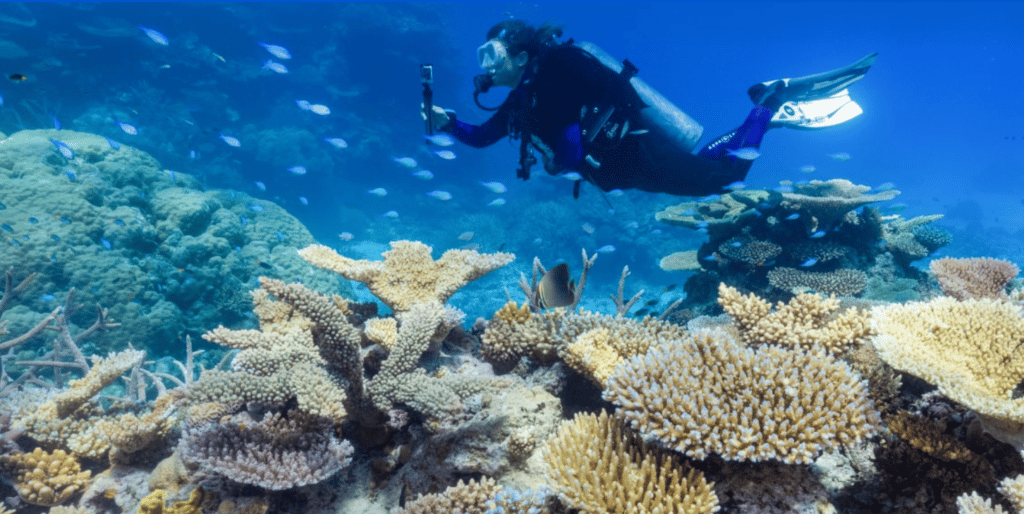Quick Guide
Australia’s seasons are opposites of those in the Northern Hemisphere: summer (December–February), fall (March–May), winter (June–August) and spring (September–November). Winter is peak travel season. Airfares are low (and the weather is pleasant and dry) between April and August. In Australia’s northern subtropical and tropical regions, there is only the wet season (October–April) or the dry season (May–September).
Visas
Travelers need a valid passport to enter Australia, as well as a visa or Electronic Travel Authority (ETA).
Money
The official currency is the Australian dollar (AUD). ATMs are widely available (but may be limited in remote towns and the outback). You can pay for purchases with your credit or debit card using EFTPOS (Australia’s electronic payment system) in most shops, restaurants and hotels. Australia has a Goods and Services Tax (GST) of 10 percent. Since service charges are not added to your bill at hotels and restaurants, expect to tip waiters 10 to 15 percent of the bill.
Travel Health
Check with Tourism Australia or the Australian Government for the latest health safety information, including travel protocols and requirements like negative COVID-19 tests, quarantines, mask mandates and more in connection with COVID-19. Before traveling, research and prepare for what to do if you get sick while away.
Getting Here
Fly into any of the international airports that dot the country’s major cities, including Adelaide, Brisbane, Cairns, Darwin, Gold Coast, Melbourne, Perth and Sydney.
Getting Around
If you plan to cover large distances once you arrive in Australia, take interstate flights via Australia’s domestic airlines (such as Qantas, Virgin, Jetstar and Rex). A vast network of well-maintained roads makes driving a rental car a good option for seeing nearby areas, and plenty of taxis and rideshare services are available in bigger cities. Major cities offer public transportation and hop-on/hop-off tourist buses (some are even free, such as Melbourne’s City Circle Tram). You can also travel by train (the Ghan runs north–south, the Indian Pacific runs east–west) and by ferry.
Local Lingo
Bring your refillable water bottle to the many bubblers (drinking fountains) to stay hydrated. Drink your java as the Aussies (Australians) do: Order a take-away (to-go) cup of a flat white (classic Aussie coffee creation consisting of a shot of espresso followed by a steamy pour of milk and a thin layer of foam).
Must-Have Apps
Beachsafe; The Happiest Hour; Rome2rio; TripIt; WhatsApp
Insider Tip
Take one or more eye-opening tours led by an Indigenous guide and discover 60,000 years of history and storytelling about Australia’s Aboriginal and Torres Strait Islander culture. Try the Walkabout Cultural Adventures to learn about the Daintree Rainforest or Wula Gura Nyinda Eco Cultural Adventures for an authentic outdoor experience.
Australia’s seasons are opposites of those in the Northern Hemisphere: summer (December–February), fall (March–May), winter (June–August) and spring (September–November). Winter is peak travel season. Airfares are low (and the weather is pleasant and dry) between April and August. In Australia’s northern subtropical and tropical regions, there is only the wet season (October–April) or the dry season (May–September).
Visas
Travelers need a valid passport to enter Australia, as well as a visa or Electronic Travel Authority (ETA).
Money
The official currency is the Australian dollar (AUD). ATMs are widely available (but may be limited in remote towns and the outback). You can pay for purchases with your credit or debit card using EFTPOS (Australia’s electronic payment system) in most shops, restaurants and hotels. Australia has a Goods and Services Tax (GST) of 10 percent. Since service charges are not added to your bill at hotels and restaurants, expect to tip waiters 10 to 15 percent of the bill.
Travel Health
Check with Tourism Australia or the Australian Government for the latest health safety information, including travel protocols and requirements like negative COVID-19 tests, quarantines, mask mandates and more in connection with COVID-19. Before traveling, research and prepare for what to do if you get sick while away.
Getting Here
Fly into any of the international airports that dot the country’s major cities, including Adelaide, Brisbane, Cairns, Darwin, Gold Coast, Melbourne, Perth and Sydney.
Getting Around
If you plan to cover large distances once you arrive in Australia, take interstate flights via Australia’s domestic airlines (such as Qantas, Virgin, Jetstar and Rex). A vast network of well-maintained roads makes driving a rental car a good option for seeing nearby areas, and plenty of taxis and rideshare services are available in bigger cities. Major cities offer public transportation and hop-on/hop-off tourist buses (some are even free, such as Melbourne’s City Circle Tram). You can also travel by train (the Ghan runs north–south, the Indian Pacific runs east–west) and by ferry.
Local Lingo
Bring your refillable water bottle to the many bubblers (drinking fountains) to stay hydrated. Drink your java as the Aussies (Australians) do: Order a take-away (to-go) cup of a flat white (classic Aussie coffee creation consisting of a shot of espresso followed by a steamy pour of milk and a thin layer of foam).
Must-Have Apps
Beachsafe; The Happiest Hour; Rome2rio; TripIt; WhatsApp
Insider Tip
Take one or more eye-opening tours led by an Indigenous guide and discover 60,000 years of history and storytelling about Australia’s Aboriginal and Torres Strait Islander culture. Try the Walkabout Cultural Adventures to learn about the Daintree Rainforest or Wula Gura Nyinda Eco Cultural Adventures for an authentic outdoor experience.
Did You Know?
The Great Barrier Reef stretches for more than 1,400 miles and is big enough to see from space. It is bursting with natural beauty, too, consisting of thousands of coral reefs, as well as hundreds of continental islands, coral cays and inshore mangrove islands.
Marriott Bonvoy Offers & Promotions
Enjoy exclusive offers on hotels stays and experiences in Australia
Offers
Where to Stay
Book Over 30 Hotel Brands Around the World












